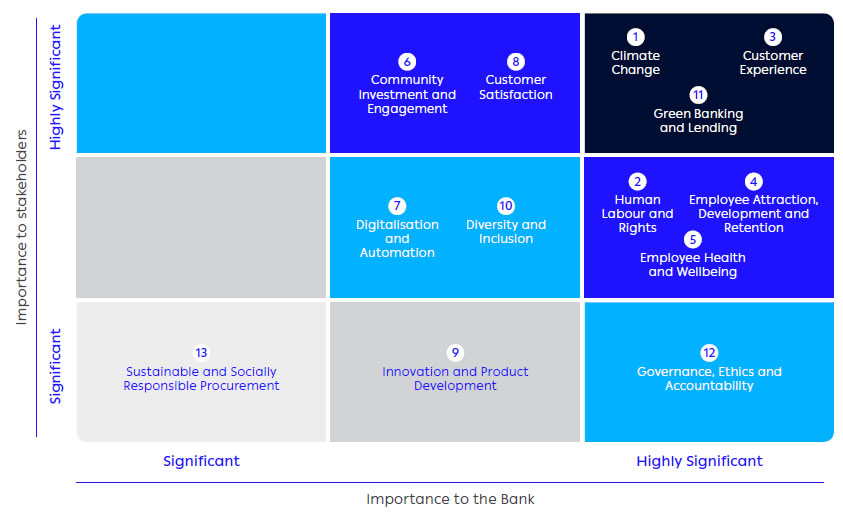
Context
materiality
Determining materiality
GRI 3-1
GRI 3-2
GRI 3-3
During the reporting period, Al Rajhi Bank conducted its annual materiality assessment to prioritise the environmental, social and governance (ESG) topics that are most important to its stakeholders and its business. The topics prioritised in 2022 were identified in 2021, following a local and global peer benchmark comparison conducted by the Bank together with one of the largest pure play sustainability consultancies in the world.
Al Rajhi discovered a number of immediate and long-term opportunities following the comprehensive assessment that would align the Bank with global best practices in its overall approach to materiality, and enable the Bank to create value across an evolving ESG landscape.
This included a concise list of 13 ESG-based material topics that would serve as the basis of the Bank’s ESG Report (pages 118 to 134), which references the Saudi Exchange ESG Disclosure Guidelines, and support the Bank’s ESG strategy, which was developed following the materiality assessment.
ENVIRONMENTAL
- 1 Climate Change
GOVERNANCE
- 7 Digitalisation and Automation
- 11 Green Banking and Lending
- 8 Customer Satisfaction
- 12 Governance, Ethics and Accountability
- 9 Innovation and Product Development
- 13 Sustainable and Socially Responsible Procurement
- 10 Diversity and Inclusion
Al Rajhi Bank’s materiality determination process
Materiality matrix
Following the annual materiality assessment during the reporting period, each materiality topic was mapped accordingly onto the Al Rajhi materiality matrix, rated from significant to highly significant in importance, enabling the Bank to closely align its strategic direction with stakeholder expectations.

Management approach
Material topics are relevant to management, particularly where the Bank’s business strategy, resource allocation, and activities are concerned, and are assigned to the relevant Heads of business or functional units through its strategic planning process. Resource allocation is based on the degree of materiality of any particular risk or opportunity.
In line with the materiality determination process, the Bank continues to formulate and roll out policies and embed goals, targets and KPIs that are reviewed at regular intervals, to ensure its employees achieve all objectives with regard to material matters.
